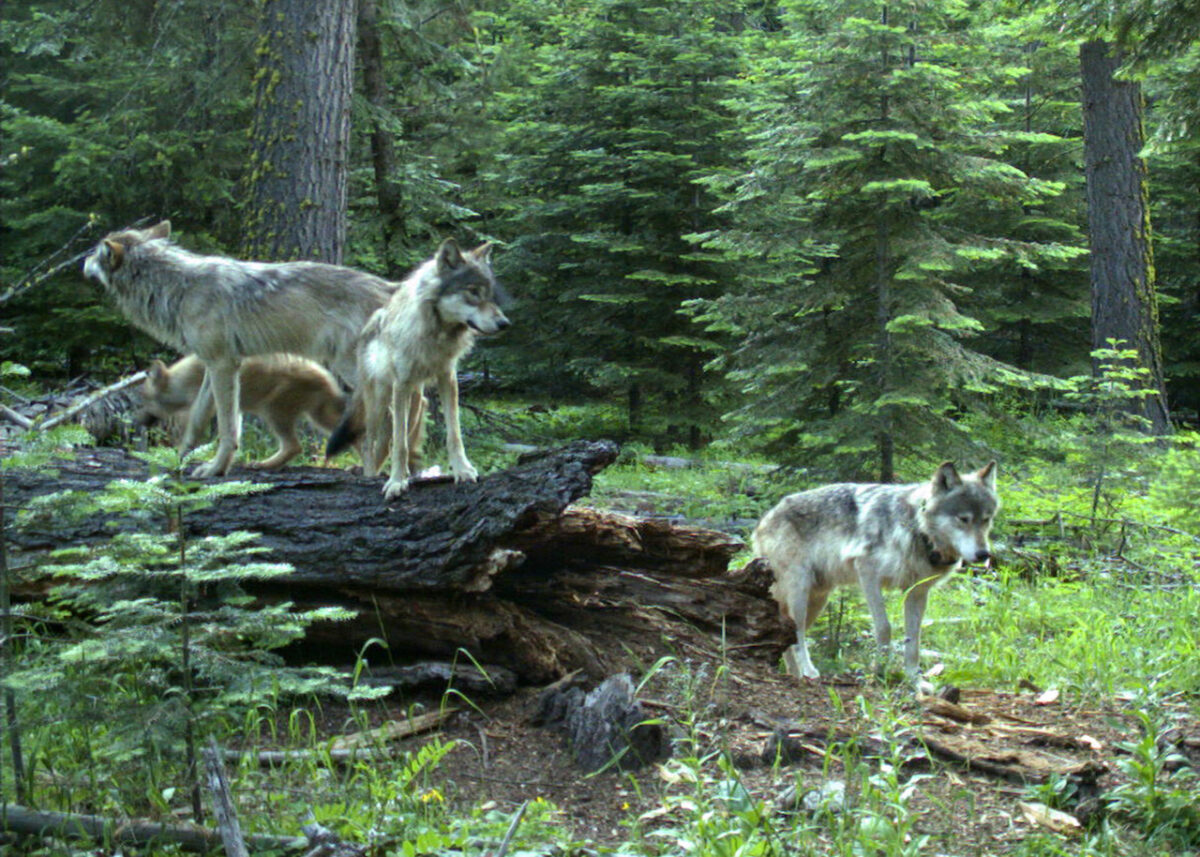
OR Wolf Poachings Set Back W. Zone Management Flexibility; State Pop. Same As Last Year
THE FOLLOWING IS A PRESS RELEASE FROM THE OREGON DEPARTMENT OF FISH AND WILDLIFE
The minimum known count of wolves in Oregon at the end of 2023 was 178 wolves, according to the Oregon Wolf Conservation and Management annual report released today. This is the same number documented in 2022 and does not include 10 wolves translocated to Colorado in 2023 to help establish a wolf population there.

This annual count is based on verified wolf evidence (like visual observations, tracks, and remote camera photographs). The actual number of wolves in Oregon is higher, as not all individuals present in the state are located during the winter count.
A total of 22 packs were documented (down from 24 last year), and 15 of those packs met the criteria as breeding pairs, with another 13 groups of two or three wolves also identified.
There were four breeding pairs in Western Oregon in 2022 through December 2023. In late December 2023, three Gearhart Mtn wolves were found dead east of Bly, including the breeding female of the pack. The loss of the fourth breeding pair in 2023 represents a setback in moving to Phase 2 in the West Zone (Western Oregon).
Under the Wolf Plan, ODFW must document four breeding pairs for three consecutive years to move from Phase 1 to Phase 2, which offers more flexibility for responding to livestock depredation under the State’s Wolf Plan. Now the clock resets, and the earliest the West Zone can move into Phase 2 is 2027.
U.S. Fish and Wildlife Service is investigating these deaths and have offered a $50,000 reward for information.
Despite this setback, wolves continued to expand their range into the West Zone in 2023. The Zone population increased by 41 percent vs. 39 percent last year.
The total population in the East Zone is 11 less than last year, but 10 of those were the wolves translocated to Colorado to help that state establish a wolf population. Northeast Oregon’s wolf population continued a stabilizing trend. Wolves are very territorial and as ODFW’s wolf map shows, wolves have filled in most available habitat. Southeast Oregon habitat is not as suitable for wolves so most wolf activity in the East Zone remains in northeast Oregon.
Parts of northeast Oregon remain livestock depredation hotspots, and managing wolf-livestock conflict continues to be challenging. Depredation increased in the East Zone by 27 percent, despite extensive use of non-lethal deterrents.
Consistent with the Wolf Plan, livestock producers implemented non-lethal measures to minimize depredation prior to any department approval of wolf lethal removal. Sixteen wolves in five packs were lethally removed in response to chronic depredation in the East Zone in 2023.
Statewide, livestock depredation events decreased from 2022 to 2023.
“Reducing the burden on landowners and producers remains critical for the long-term conservation of wolves in Oregon,” said Roblyn Brown, ODFW Wolf Coordinator.
In 2023, ODFW staff made process improvements to address wolf-livestock conflict which were reported to the Commission in December 2023.
The Oregon Department of Agriculture’s (ODA) compensation program awarded grants totaling $477,661 to 11 counties in 2023. The majority of the funds (84%) were used for non-lethal preventative measures but all requests for compensation of confirmed and probable depredations were granted in full.
ODFW remains extremely concerned about the number of confirmed poaching events and other suspicious deaths of wolves in Oregon.
A wolf was found shot in 2023. In several cases still under investigation by OSP, several wolves were poisoned.
“The amount of poaching and other suspicious deaths is alarming, impacts our conservation goals and could affect our ability to manage wolves in Oregon,” said Bernadette Graham-Hudson, ODFW wildlife division administrator.
ODFW is working with our partners Oregon State Police, U.S. Fish and Wildlife Service law enforcement and the Protect Oregon’s Wildlife- Turn In Poachers partnership team to address the growing concern.
Collar activity showed wolves continue to disperse to western Oregon and adjacent states in 2023, again demonstrating the connectivity and long-term health of the Rocky Mountain wolf population.
For more information see the 2023 Annual Wolf Report online at odfw.com/wolves. For photos of wolves visit ODFW’s flickr page.
